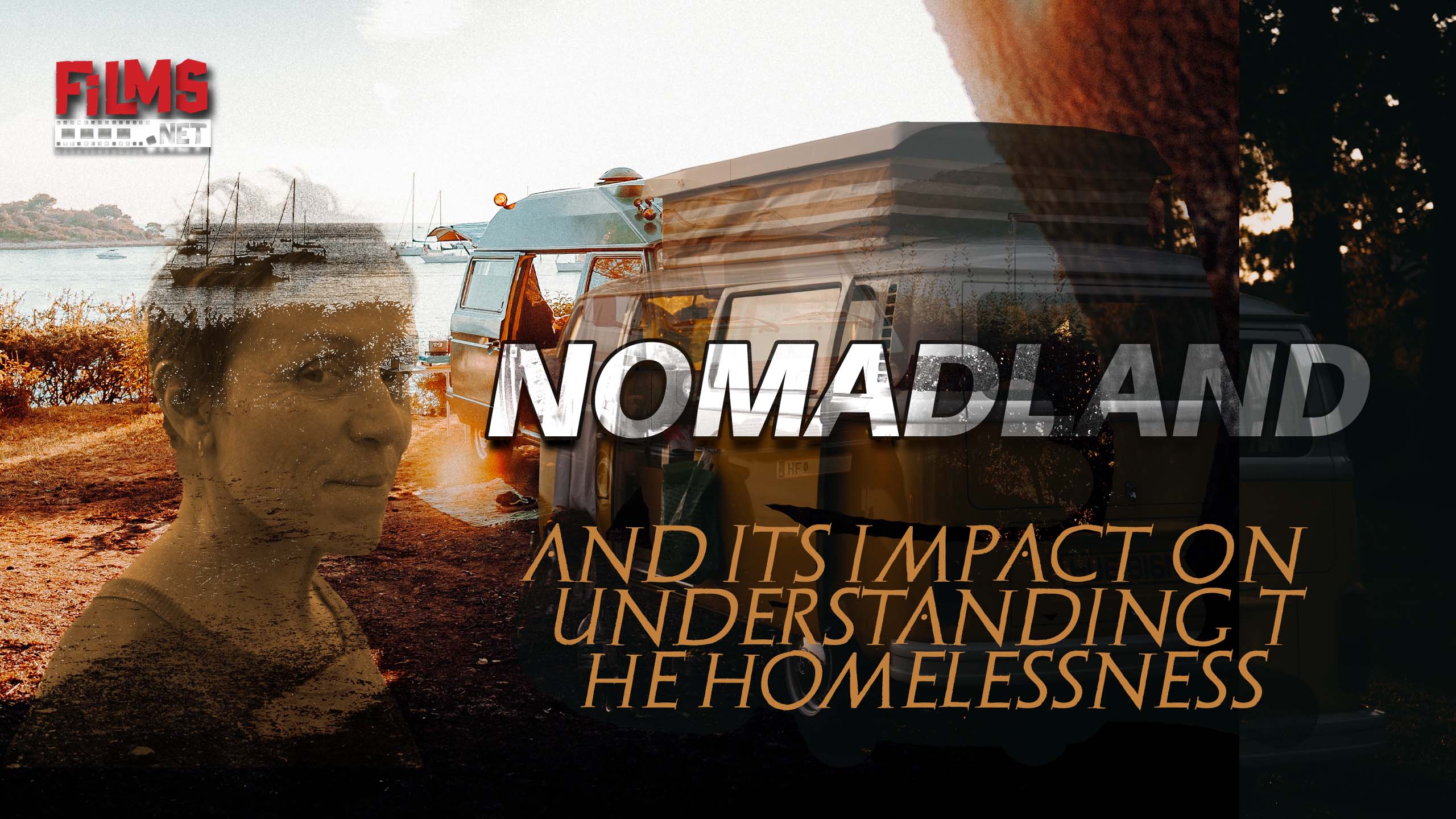Nomadland and Its Impact on Understanding the homelessness

Nomadland and Its Impact
Are you searching for a movie that can change your perspective on homelessness? Look no further than “Nomadland.” The film has captured the hearts of many with its poignant storyline and sheds light on the reality of living as a nomad in America. In this blog post, we will dive into everything you need to know about “Nomadland” and its impact on understanding homelessness. Get ready to get inspiration and education through this powerful piece of cinema.
What is Nomadland?
Nomadland is a film that tells the story of American workers who have lost their jobs and homes in the Great Recession and have taken to living as modern-day nomads, travelling across the country in search of work. The film gets direction from Chloe Zhao. Furthermore, stars include Frances McDormand as Fern. However, she is a woman who embarks on this journey after the recession guts her small town.
Moreover, the film gets appreciation for its realistic portrayal of the lives of these so-called “nomads”. Additionally, she gets several awards, including the Golden Lion at the Venice Film Festival. It has also been nominated for six Academy Awards, including Best Picture.
Nomadland provides a unique and intimate look at a group of often invisible people. It is a compassionate film that humanizes those struggling to make ends meet in America.
Themes and Takeaways
- Furthermore, the story of Fern, a woman who finds herself homeless after her husband’s death and job loss. She travels across America, living in her van and working odd jobs to make ends meet. Along the way, she meets other nomads struggling to find a place in the world.
- Additionally, the film is a powerful exploration of what homelessness means in America today. It highlights many people’s struggles and the strength and resilience of those who choose to live on the road.
- However, the film highlights the struggles many people face when homeless. It also shows the strength and resilience of those on the road. These themes underscore the importance of understanding and supporting those struggling to find their place in the world.
The Cast of Characters
The main character in “Nomadland” is Fern, played by Frances McDormand. She is a widow in her 60s who loses her job at a factory in Empire, Nevada. Moreover, she became a wanderer, living outside her van and travelling around the American West.
Furthermore, she meets others like herself, who live on society’s margins. They include Bob (David Strathairn), a former teacher who has been living in his van for years; Linda May (Betsy Brandt), a young woman who hitchhikes from place to place; and Swankie (Patricia Grier), an older woman who lives in a makeshift campground.
The film follows Fern as she moves from place to place, working odd jobs and meeting new people. We see her struggle to make ends meet but also find moments of joy and beauty in her nomadic lifestyle. The film gets appreciation for its realistic portrayal of life on the fringe of society. Plus, it’s a compassionate look at the people who live there.
Director’s Purpose
- The director of the movie, Chloe Zhao, said she wanted to make a film that would help people understand the homeless situation in America. She gets inspired by the book Nomadic Matt. However, the book revolves around the man who gives up his traditional life to live on the road in an RV.
- Zhao says that she wanted to show how people who are homeless are just like everyone else. Moreover, she leads a rich and fulfilling life despite their circumstances. She also wants to dispel some myths about homelessness, such as the idea that all homeless people are lazy or drug addicts.
- The film gives an appreciation for its realistic portrayal of the homeless lifestyle and insights into the daily challenges and struggles that homeless people face. It also gets appreciation for depicting the many good things about being nomadic, such as freedom, flexibility, and self-reliance.
How Nomadland Affects the Viewer
- Moreover, the movie has had a profound impact on the way viewers understand homelessness. The film follows the journey of one woman, Fern, as she travels across America, working odd jobs and living in her van. Along the way, she meets other nomads who share their stories of hardship and survival.
- The film provides a rare glimpse into the lives of people who are often invisible to society. It humanizes a population that is often demonized and misunderstood. Plus, viewers get an understanding of the challenges the homeless face and a renewed compassion for their situation.
Who is Frances McDormand?
Furthermore, Frances McDormand is an American actress. She is best famous for her work in film and television. Her work in film includes the movies Fargo, Mississippi Burning, and North Country. In television, she has starred in the series Olive Kitteridge and Rectify. McDormand has also won two Academy Awards for her work in Fargo and three Billboards Outside Ebbing, Missouri.
What is the plot of Nomadland?
The film follows the story of a woman named Fern (played by Frances McDormand) who, after losing everything in the 2008 financial crisis, embarks on a journey across America, living as a modern-day nomad. Along the way, she meets other people like herself who have also lost their homes and jobs and live on the road in vans and RVs. Together, they travel to different towns and work temporary jobs to meet ends. The film is a powerful portrait of what it means to be homeless in America today and how difficult it is to survive without a stable home or income.
What are the themes of Nomadland?
The movie’s themes include understanding the root causes of homelessness, the strength and resilience of homeless people, and the importance of community. The film tells the story of Fern, a woman who became homeless after the death of her husband and the loss of her job. Fern embarks on a journey across America, living in her van and working odd jobs to make ends meet. Along the way, she meets other people experiencing homelessness and learns about their stories. The film ultimately highlights the importance of community and human connection in overcoming difficult circumstances.
How does Nomadland depict homelessness?
However, it is a movie that tells the story of a woman who becomes homeless after she loses her job. The film follows her as she travels around the country, living in her van and working odd jobs. The film does an excellent job of depicting the reality of homelessness. It shows how difficult it is to live on the road and how people can become isolated and lonely. It also highlights the strength and resilience of those forced to live this way. The movie is an important reminder that real people are suffering from homelessness and want to do more to help them.
What are the critical responses to the movie?
The film gets appreciation for its accurate and nuanced portrayal of the lives of American nomads, who are often misunderstood or misrepresented in mainstream media. However, the film is criticized for its lack of focus on the structural causes of homelessness and its supposed romanticization of a problematic lifestyle. Some have argued that the film does not do enough to challenge the viewer’s preconceptions about homelessness. In contrast, others have lauded it for its empathetic and humanizing portrait of an often-marginalized population.
What is the social impact of Nomadland?
- The film gets appreciation for its accurate portrayal of the realities of life for many American workers. The film follows the journeys of several real-life nomads as they travel across the country working temporary jobs. While the film gets appreciation for its realistic portrayal of this lifestyle, it has also been criticized for its lack of focus on the social impact of this growing population.
- An estimated three million American workers identify as nomads, and that number is only expected to grow in the coming years. This group is often called the “precariat” – a term that describes those who live in precarity or a state of insecurity. The precariat is a growing class of workers not tied to one specific job or location. They often work multiple jobs and frequently move to make ends meet.
- The social impact of this growing population is still largely unknown. However, some studies suggest that the nomadic lifestyle can negatively affect mental health and overall well-being. The lack of stability and community can lead to isolation and anxiety. Also, constant movement can make maintaining healthy relationships challenging or accessing necessary services like healthcare.
- Moreover, more research is required on the nomad lifestyle. The movie provides a realistic portrayal of this lifestyle but fails to explore the potential negative.
Conclusion
The movie has done an essential job of showing the realities of homelessness to a broader audience and revealing the dignity and resilience of those living on the fringes. Films like Nomadland can provide much-needed insight into complex social issues and create meaningful dialogue around them. We hope this movie will help people better understand homelessness and lead to more significant action towards ending it.


